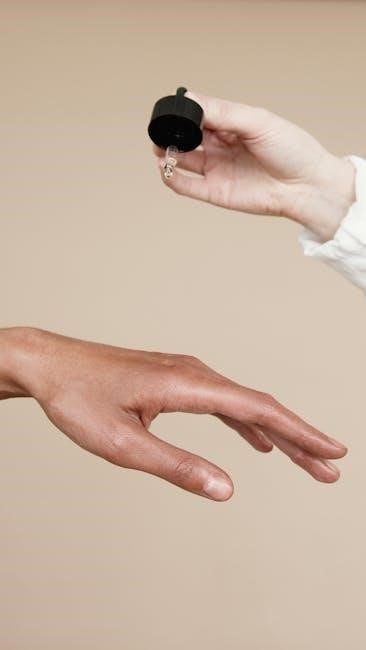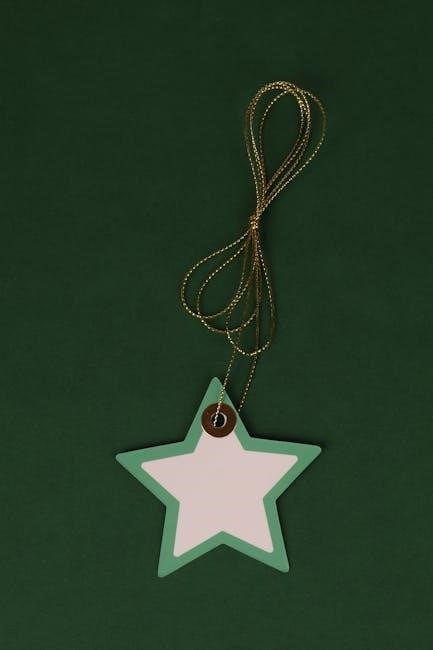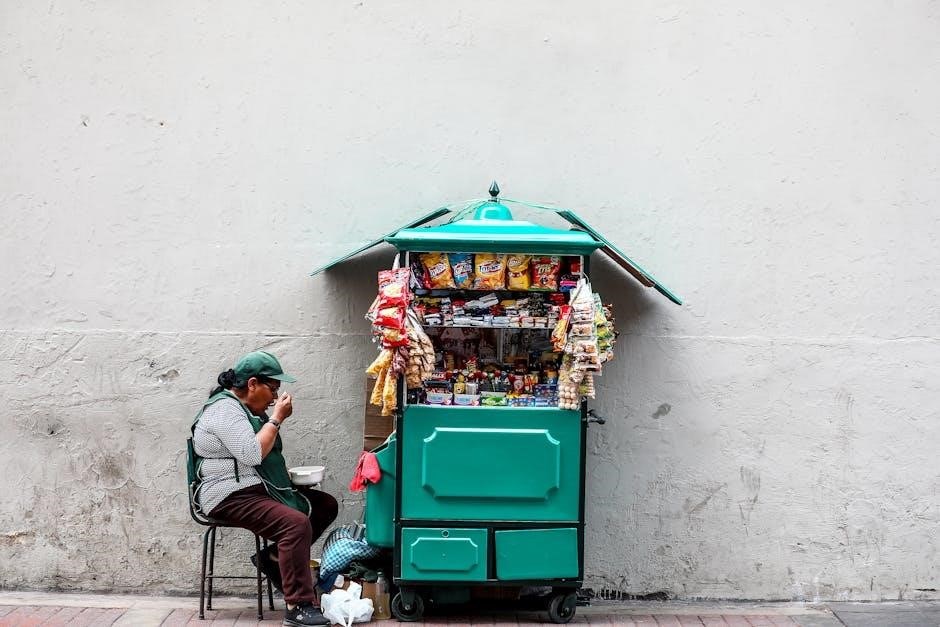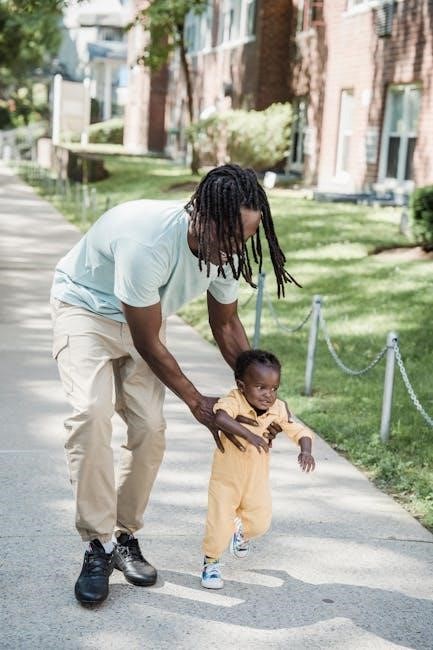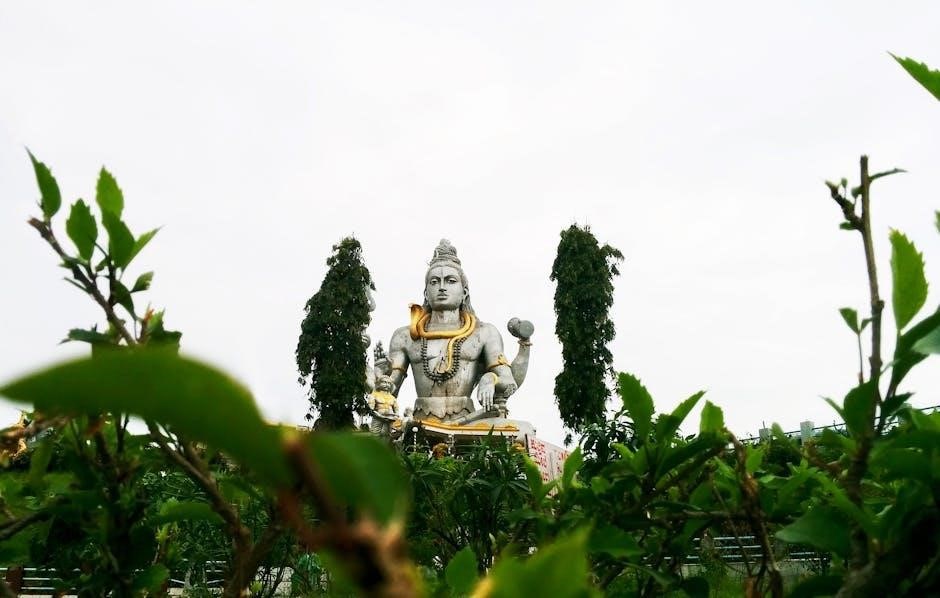BLS Provider Manual 2022 PDF Free Download: A Comprehensive Guide
The 2022 BLS Handbook provides crucial instruction for adults and children, covering AED usage, airway management, and rescue techniques․
Accessing the 2022 BLS Handbook PDF is vital for healthcare professionals and first responders seeking updated guidelines and algorithms․
Reliable sources offer free download options, ensuring widespread availability of this comprehensive resource for effective emergency care․

Basic Life Support (BLS), as defined by the American Heart Association (AHA), represents the foundational skillset for responding to life-threatening emergencies․ This crucial training equips individuals with the ability to provide high-quality cardiopulmonary resuscitation (CPR) and utilize automated external defibrillators (AEDs) effectively, potentially saving lives during critical moments․ The 2022 BLS Handbook serves as a comprehensive resource, meticulously detailing these essential techniques and protocols․
This handbook isn’t merely a collection of procedures; it’s a dynamic guide reflecting the latest advancements in resuscitation science․ It’s designed for a broad audience, including healthcare professionals, first responders, and even concerned citizens seeking to enhance their emergency preparedness․ The AHA’s BLS courses, and consequently this handbook, emphasize a systematic approach to patient assessment and intervention, prioritizing airway management, breathing support, and circulatory assistance – often remembered through the ABCD assessment․
The 2022 edition builds upon previous guidelines, incorporating updates from the International Liaison Committee on Resuscitation (ILCOR)․ Access to the PDF version allows for convenient study and reference, ensuring that vital information is readily available when and where it’s needed most․ Understanding the core principles within this handbook is the first step towards becoming a confident and capable lifesaver․
Understanding Basic Life Support (BLS)

Basic Life Support (BLS) encompasses the initial interventions required to stabilize a patient experiencing cardiac arrest or respiratory failure․ It’s a tiered approach, beginning with recognizing the emergency and activating the emergency response system․ Core components include high-quality CPR – focusing on effective chest compressions and rescue breaths – and prompt utilization of an Automated External Defibrillator (AED) when indicated․
Unlike Advanced Cardiac Life Support (ACLS), BLS doesn’t require advanced pharmacological interventions or invasive procedures․ Instead, it relies on fundamental skills that can be learned and applied by a wide range of individuals․ The 2022 BLS Handbook meticulously outlines these skills, emphasizing the importance of minimizing interruptions to chest compressions and ensuring adequate ventilation․
A key principle of BLS is the ABCD assessment – Airway, Breathing, Circulation, and Defibrillation – providing a systematic framework for evaluating a patient’s condition and guiding treatment․ The PDF manual serves as an invaluable resource for mastering this assessment and the corresponding interventions․ Ultimately, BLS aims to bridge the gap between the onset of a life-threatening event and the arrival of advanced medical care, significantly improving a patient’s chances of survival․

The Importance of the AHA BLS Certification
AHA (American Heart Association) BLS certification is widely recognized as the gold standard in basic life support training․ It signifies that a healthcare professional or first responder has demonstrated proficiency in essential life-saving skills, including CPR, AED usage, and airway management․ This certification isn’t merely a credential; it’s a demonstration of commitment to patient safety and a willingness to respond effectively in emergency situations․

Many healthcare facilities and organizations require BLS certification as a condition of employment․ The 2022 BLS Handbook serves as the foundational text for these courses, ensuring consistent and up-to-date training aligned with the latest scientific guidelines․ Obtaining and maintaining this certification demonstrates adherence to best practices and a dedication to providing high-quality care․
The BLS Provider Manual 2022 PDF facilitates self-study and review, reinforcing the concepts taught in formal courses․ Certification is typically valid for two years, necessitating renewal through refresher courses to maintain competency․ Investing in AHA BLS certification is an investment in preparedness, potentially making the difference between life and death․
Key Components Covered in the 2022 BLS Handbook
The 2022 BLS Handbook meticulously details essential life support techniques, forming the core curriculum for healthcare providers and first responders․ A primary focus is Basic Life Support instruction for both adult and pediatric patients, outlining step-by-step procedures for effective CPR delivery․ Crucially, the handbook provides comprehensive guidance on Automated External Defibrillator (AED) usage, emphasizing proper pad placement and rhythm analysis․
Beyond CPR and AEDs, the manual dedicates significant attention to managing airway obstruction, including techniques like the Heimlich maneuver․ Rescue breathing techniques are also thoroughly explained, covering various scenarios and patient populations․ The handbook also introduces the vital ABCD assessment – Airway, Breathing, Circulation, and Defibrillation – a systematic approach to patient evaluation․
Furthermore, the BLS Provider Manual 2022 PDF includes specific algorithms for various emergency situations, offering clear decision-making pathways․ Accessing this resource ensures practitioners are equipped with the latest knowledge and skills to respond confidently and effectively to cardiac arrest and other life-threatening emergencies․
Adult BLS Algorithm: A Step-by-Step Overview
The adult Basic Life Support (BLS) algorithm, detailed within the 2022 BLS Handbook, prioritizes swift and effective intervention during cardiac emergencies․ The initial step involves assessing the scene for safety and checking for responsiveness․ If unresponsive, immediately activate emergency services and begin chest compressions – at least 100 compressions per minute, with a depth of approximately 2 inches․
Following 30 compressions, deliver two rescue breaths, ensuring visible chest rise․ Continue cycles of 30 compressions and 2 breaths until an AED arrives․ Upon arrival, power on the AED and follow the voice prompts, analyzing the heart rhythm․ If a shock is advised, ensure everyone is clear before delivering it, then resume CPR immediately afterward․
The BLS Provider Manual 2022 PDF emphasizes continuous chest compressions with minimal interruptions․ Healthcare professionals should utilize the ABCD assessment throughout the process, continually evaluating airway, breathing, and circulation․ Understanding this algorithm is paramount for effective emergency response and improved patient outcomes․
BLS for Children: Specific Considerations
Basic Life Support (BLS) for children, as outlined in the 2022 BLS Handbook, requires adaptations from adult protocols due to physiological differences․ Initial assessment remains focused on safety and responsiveness, but activating emergency services may involve a family member or bystander first․ Compressions are delivered at a rate of 100-120 per minute, but depth varies with the child’s size – approximately one-third the anterior-posterior diameter of the chest․
The compression-to-ventilation ratio differs; for a single rescuer, it’s 30:2, mirroring adult BLS․ However, with two rescuers, the ratio shifts to 15:2․ Rescue breaths should be gentle, ensuring visible chest rise without excessive force․ The BLS Provider Manual 2022 PDF stresses the importance of considering the cause of arrest – often respiratory in children – and prioritizing effective ventilation․
AED use in children requires pediatric pads if available; otherwise, adult pads can be used, ensuring they don’t touch each other․ Continuous assessment and adaptation are crucial, guided by the principles detailed within the handbook․
Automated External Defibrillator (AED) Usage
Automated External Defibrillators (AEDs) are critical components of Basic Life Support (BLS), as detailed in the 2022 BLS Handbook․ Early defibrillation significantly increases survival rates from cardiac arrest․ Upon recognizing a potential cardiac event, ensure scene safety and activate emergency services before retrieving the AED․
The handbook emphasizes turning on the AED and following the voice prompts․ Pad placement is crucial: one on the upper right chest, below the clavicle, and the other on the lower left side of the chest, below the armpit․ Ensure the patient’s chest is bare and dry․ The AED analyzes the heart rhythm and advises whether a shock is needed․
Before delivering a shock, verbally announce “Clear!” to ensure no one is touching the patient․ After the shock, or if no shock is advised, immediately resume CPR, starting with chest compressions․ The BLS Provider Manual 2022 PDF highlights the importance of continuous CPR until advanced medical personnel arrive․
Airway Obstruction and Rescue Breathing Techniques
The 2022 BLS Handbook dedicates significant attention to managing airway obstruction, a life-threatening emergency․ Recognizing the signs of obstruction – inability to speak, breathe, or cough effectively – is paramount․ The handbook details techniques for both conscious and unconscious victims․
For conscious adults and children, the BLS protocol involves encouraging forceful coughing․ If ineffective, abdominal thrusts (Heimlich maneuver) are employed․ The manual provides detailed diagrams illustrating proper hand placement and technique․ For unconscious victims, chest compressions are initiated, potentially dislodging the obstruction․
Rescue breathing techniques, also covered extensively, are vital when a patient is not breathing or has inadequate respiration․ The BLS Provider Manual 2022 PDF emphasizes proper head-tilt/chin-lift maneuvers to open the airway․ Effective rescue breaths deliver visible chest rise, ensuring adequate ventilation until advanced help arrives․
CPR (Cardiopulmonary Resuscitation) Fundamentals
Cardiopulmonary Resuscitation (CPR) forms the cornerstone of Basic Life Support, and the 2022 BLS Handbook provides a detailed, step-by-step guide․ The manual stresses high-quality chest compressions as the primary focus, emphasizing a rate of 100-120 compressions per minute and a depth of at least 2 inches (5 cm) for adults․
The handbook clarifies the compression-to-ventilation ratio – 30 compressions followed by 2 breaths – for adults, children, and infants․ Proper hand placement is visually demonstrated, ensuring effective compression of the chest․ Minimizing interruptions during compressions is highlighted as crucial for maintaining blood flow․
The BLS Provider Manual 2022 PDF also details the importance of early defibrillation when appropriate, integrating AED usage seamlessly into the CPR algorithm․ It reinforces the ABCD assessment – Airway, Breathing, Circulation, Defibrillation – as a systematic approach to resuscitation․
Recognizing Cardiac Arrest and Activating Emergency Services
Prompt recognition of cardiac arrest is paramount, and the 2022 BLS Handbook emphasizes identifying unresponsiveness and the absence of normal breathing․ The manual details assessing for a pulse, though it acknowledges the difficulty for lay rescuers, advocating for immediate initiation of chest compressions if unsure․

The handbook stresses the critical importance of activating emergency services – calling for help or assigning someone to do so – before initiating CPR․ Clear instructions are provided on what information to relay to the dispatcher, including the location and the victim’s condition․
The BLS Provider Manual 2022 PDF highlights the need for a systematic approach, utilizing the ABCD assessment to quickly evaluate the situation․ It reinforces the concept that early access to care significantly improves survival rates․ The manual also covers considerations for public access defibrillation (PAD) programs and integrating AEDs into the emergency response․

The ABCD Assessment in BLS
The ABCD assessment, a cornerstone of Basic Life Support, is thoroughly detailed within the 2022 BLS Handbook․ This systematic approach prioritizes patient evaluation, beginning with Airway – ensuring a clear and open passage for air․ The manual provides techniques for opening the airway, such as the head-tilt/chin-lift maneuver․
Next is Breathing, assessing for the presence and effectiveness of respiration․ The handbook outlines methods for providing rescue breaths, including the appropriate rate and volume․ Circulation follows, focusing on identifying a pulse and initiating chest compressions if absent․ Proper hand placement and compression depth are emphasized․
Finally, Defibrillation is addressed, detailing the use of an AED if indicated․ The BLS Provider Manual 2022 PDF stresses the importance of continuous assessment and reassessment throughout the process, adapting interventions as needed․ Mastering the ABCD assessment is crucial for effective and efficient emergency care․
2022 Handbook Updates and Changes from Previous Guidelines
The 2022 BLS Handbook reflects updates from the International Liaison Committee on Resuscitation (ILCOR), building upon previous guidelines․ Significant changes emphasize early recognition of cardiac arrest and prompt activation of emergency services․ The manual details refinements to the adult BLS algorithm, focusing on high-quality chest compressions and minimizing interruptions․

Updates also address specific considerations for pediatric BLS, including age-appropriate compression depths and ventilation rates․ The BLS Provider Manual 2022 PDF highlights the importance of team dynamics and effective communication during resuscitation efforts․ There’s increased emphasis on systems of care and post-cardiac arrest care․
Furthermore, the handbook clarifies AED usage protocols and addresses challenges in various settings․ These revisions aim to improve outcomes and ensure healthcare professionals are equipped with the most current, evidence-based practices․ Accessing the free download ensures practitioners stay informed․
Accessing the 2022 BLS Handbook PDF
Obtaining the 2022 BLS Handbook PDF is straightforward, with several reliable sources offering free downloads․ The American Heart Association (AHA) website often provides access to the handbook for certified instructors and students․ Numerous medical resource websites and educational platforms also host the PDF, ensuring broad accessibility for healthcare professionals and those seeking BLS training․
When searching for a free download, prioritize reputable sources to guarantee the document’s authenticity and accuracy․ Be cautious of unofficial websites that may offer outdated or compromised versions․ Direct links to verified PDFs are frequently shared within BLS training courses and online forums․
Downloading the BLS Provider Manual 2022 PDF allows for convenient offline access, enabling quick reference during emergencies or study sessions․ Ensure your device has sufficient storage space and a PDF reader installed for optimal viewing․

Free Download Options and Reliable Sources

Several avenues provide free download options for the 2022 BLS Handbook PDF, but verifying source reliability is paramount․ The AHA’s official website is a primary, trustworthy resource, often offering the handbook to course participants․ However, access may require registration or enrollment in a BLS course․
Reputable medical education platforms and training organizations frequently host the PDF for download․ Look for websites affiliated with recognized healthcare institutions or accredited training centers․ Websites like archive․org sometimes contain archived versions, but confirm the document’s alignment with the 2022 guidelines․
Reliable sources include sites dedicated to emergency medical services (EMS) and cardiopulmonary resuscitation (CPR) education․ Exercise caution with unfamiliar websites; prioritize those with clear contact information and a demonstrated commitment to accurate medical content․ Always scan downloaded files with antivirus software to ensure safety․
BLS Certification Validity and Renewal Requirements
BLS certification, obtained through courses aligned with the 2022 BLS Handbook, typically holds a validity period of two years․ This timeframe ensures healthcare professionals maintain current knowledge and skills in life-saving techniques․ Renewal is mandatory to remain certified and demonstrate continued competency․
Renewal requirements generally involve completing an AHA BLS renewal course․ These courses focus on updates to guidelines, skill refreshers, and practical assessments․ Some providers may offer online renewal options, but hands-on skills practice is often a crucial component․
Maintaining an active certification is vital for healthcare employment and professional credibility․ Employers often require current BLS certification as a condition of employment․ Failing to renew within the validity period necessitates retaking the full BLS course, including both cognitive and skills evaluations․
The AHA and KLA (Korean Life Association) offer certification, with the latter requiring a passing score on both practical and written exams․
Advanced Cardiac Life Support (ACLS) and its Relation to BLS
Advanced Cardiac Life Support (ACLS) builds upon the foundational skills learned in Basic Life Support (BLS)․ While BLS focuses on immediate life-saving interventions for cardiac arrest – airway, breathing, and circulation – ACLS incorporates advanced techniques for managing complex cardiovascular emergencies․
A current BLS certification is a prerequisite for enrolling in an ACLS course․ ACLS providers utilize skills like ECG interpretation, pharmacological interventions, and advanced airway management, all stemming from the core principles established in BLS․
The 2022 BLS Handbook provides the essential groundwork for understanding ACLS algorithms and procedures․ ACLS training expands upon BLS by addressing pulseless electrical activity, ventricular fibrillation, and bradycardia with advanced interventions․
Essentially, BLS initiates the rescue, while ACLS aims to stabilize and resolve the underlying cause of the cardiac arrest․ Both are crucial components of a comprehensive emergency cardiovascular care system, working synergistically to improve patient outcomes․


























